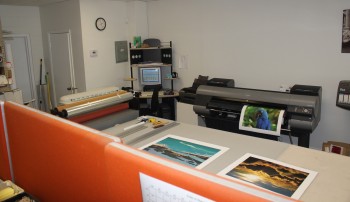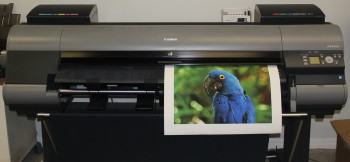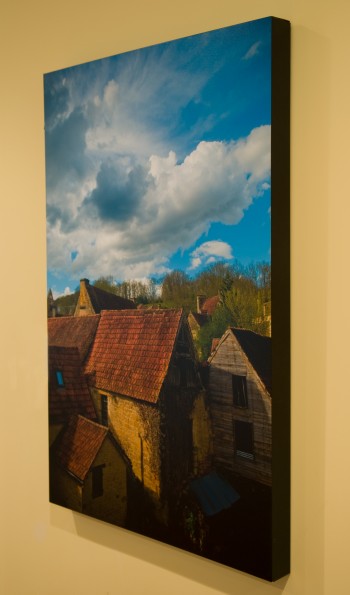 It was a natural expansion for West Side Reprographics in Vero Beach, Fla. Already well-versed in graphics reproduction for its core corporate and architectural market, producing CAD, presentation and technical prints, West Side Reprographics added fine art and photographic reproduction to its product mix about six months ago.
It was a natural expansion for West Side Reprographics in Vero Beach, Fla. Already well-versed in graphics reproduction for its core corporate and architectural market, producing CAD, presentation and technical prints, West Side Reprographics added fine art and photographic reproduction to its product mix about six months ago.
With the purchase of a Canon iPF8300 44” wide inkjet printer from LexJet, West Side Reprographics created a sister company out of its offices called Vero Beach Fine Art Reproductions. With its already well-honed expertise in full-color wide-format printing, the addition of fine-art reproduction services was a cinch.
David Lovett, West Side Reprographics manager, worked with his LexJet customer specialist, Josh Abel, to get the new system up and running. Though the latest Canon inkjet printers are virtually plug-and-play, Abel was able to help with the details and finding the print materials that would make West Side’s customers happy.
 “The printer was really easy to set up; the learning curve was hardly a curve. With Josh’s help, we were able to install all the proper media profiles into the printer and my computer. That was really the only thing I needed help with on the printer, and Josh helped me through the process. Now I just pretty much tell it to go,” says Lovett. “Josh also helped me out with the materials in the beginning. The main client I was trying to please was looking for something different and Josh found a canvas that made him happy, and everyone else likes it as well.”
“The printer was really easy to set up; the learning curve was hardly a curve. With Josh’s help, we were able to install all the proper media profiles into the printer and my computer. That was really the only thing I needed help with on the printer, and Josh helped me through the process. Now I just pretty much tell it to go,” says Lovett. “Josh also helped me out with the materials in the beginning. The main client I was trying to please was looking for something different and Josh found a canvas that made him happy, and everyone else likes it as well.”
Lovett says that West Side Reprographics is primarily printing its fine art and photo reproductions on LexJet Sunset Reserve Bright Matte Canvas and Sunset Select Matte Canvas, finished with LexJet Sunset Satin Coating and Sunset Gloss Coating. Coating the canvas was another one of the very few learning curves facing Lovett with its new inkjet capabilities.
 “When I first started with the canvas I was rolling it on, but I wasn’t really happy with that. I’m not a good painter, so I’m sure it was me, and not the coating. I was pressing down too hard and then too lightly in spots. I know rolling works great for other people, but I just didn’t have a knack for it,” explains Lovett. “Josh did some research for me and recommended a sprayer, so I went to Home Depot, got a sprayer and I’ve been using it ever since. The product is easy to use and you don’t have to mix it with anything. I dump it in the container, screw it onto the sprayer and off I go.”
“When I first started with the canvas I was rolling it on, but I wasn’t really happy with that. I’m not a good painter, so I’m sure it was me, and not the coating. I was pressing down too hard and then too lightly in spots. I know rolling works great for other people, but I just didn’t have a knack for it,” explains Lovett. “Josh did some research for me and recommended a sprayer, so I went to Home Depot, got a sprayer and I’ve been using it ever since. The product is easy to use and you don’t have to mix it with anything. I dump it in the container, screw it onto the sprayer and off I go.”
With a smooth and efficient system in place, West Side Reprographics was able to get the word-of-mouth ball rolling as satisfied clients recommended the company’s work to others in the area. Lovett also made a point of visiting local frame shops to let them know about their capabilities. As with the individual clients, once the frame shops saw the quality West Side Reprographics was able to produce they helped get the word out as well.
The next step, says Lovett, is to get the Vero Beach Fine Art Reproductions website up and running to drive more business to that division of West Side Reprographics. Launching new endeavors is nothing new for Lovett, who opened the Vero Beach location about seven years ago. It’s an extension of the main location, which is about 75 miles down the coast in Riviera Beach, Fla. The Riviera Beach location has been in business for more than 40 years.


